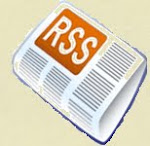How much trash do we generate?
I discovered a man took on the task of measuring how much he threw away to better make better purchase and life decisions that would allow him to waste less. He saved every piece of garbage for a year. In his basement. Everything. He did have rules of course; view them and meet the guy here.
I started to follow his daily journal last summer and it got me thinking about garbage. Where does it go? When have we thrown away too much?
Let’s take a look shall we?
I did some searches online for landfills and used the aerial feature on Mapquest to get a bird’s eye view of their locations and operations. In Chesapeak, Virginia, I found this:
A relatively compact operation, though very close to a neighborhood with one of those ‘water view’ ponds that I’m sure no parent let’s their kids swim in. It’s also located next to a pretty major river. In western Washington I found the following. I don’t know if it’s only used for the coastal towns or if Seattle sends trucks their way.
To pick on the state of Michigan, I found that it receives trash from neighboring states as well as Canada. A plan to phase out the import of Canadian garbage was created in 2006 when in 2005 it was brought to the greater public attention that Canadians dumped 19% of Michigan’s total trash volume, or 11.9 million cubic yards annually. We can’t really isolate Canada though because many states outsource their garbage dumping. That a state can outsource the land-filling of their trash is amazing to me though in a way is the same decision you and I make every time we take our bag of garbage to the curb each week.
Back to Dave and processing my garbage more effectively. In the last 8 years I have saved at least one bag per week from going to the landfill by recycling paper, glass, plastics, and metals. This year inspired by 365daysoftrash.blogspot.com, I started composting. This has reduced my weekly curbside deposits in half.
The compost becomes rich soil that is returned to your garden and lawns, right? Now not all our household garbage is good for soil, but just for kicks, let’s consider how much volume we’re really talking about if the Canadian trash coming to Michigan was mulch.
Using a material calculator I found on-line, 11.9 million cubic yards IF it were mulch metered out two inches thick, would cover 1,927,800,000 square feet of land (based on usage of one cubic yard covering 162 ft^2 per upstatemulch.com). If you wondered how many subdivisions that might service, I guesstimate 481,950,000 typical high-end neighborhood houses .
Per the national census data, there are only slightly more than sixteen million households in the Great Lake states combined. Sure they could export to California, but that would only add twelve million more households and surely all of those don’t have the mulch requirements previously stated. Certainly California has enough mulch of it's own.
The importing and exporting of trash is not likely to go away as the economics of such business is just too good though I’m happy to contribute less to this cause.













